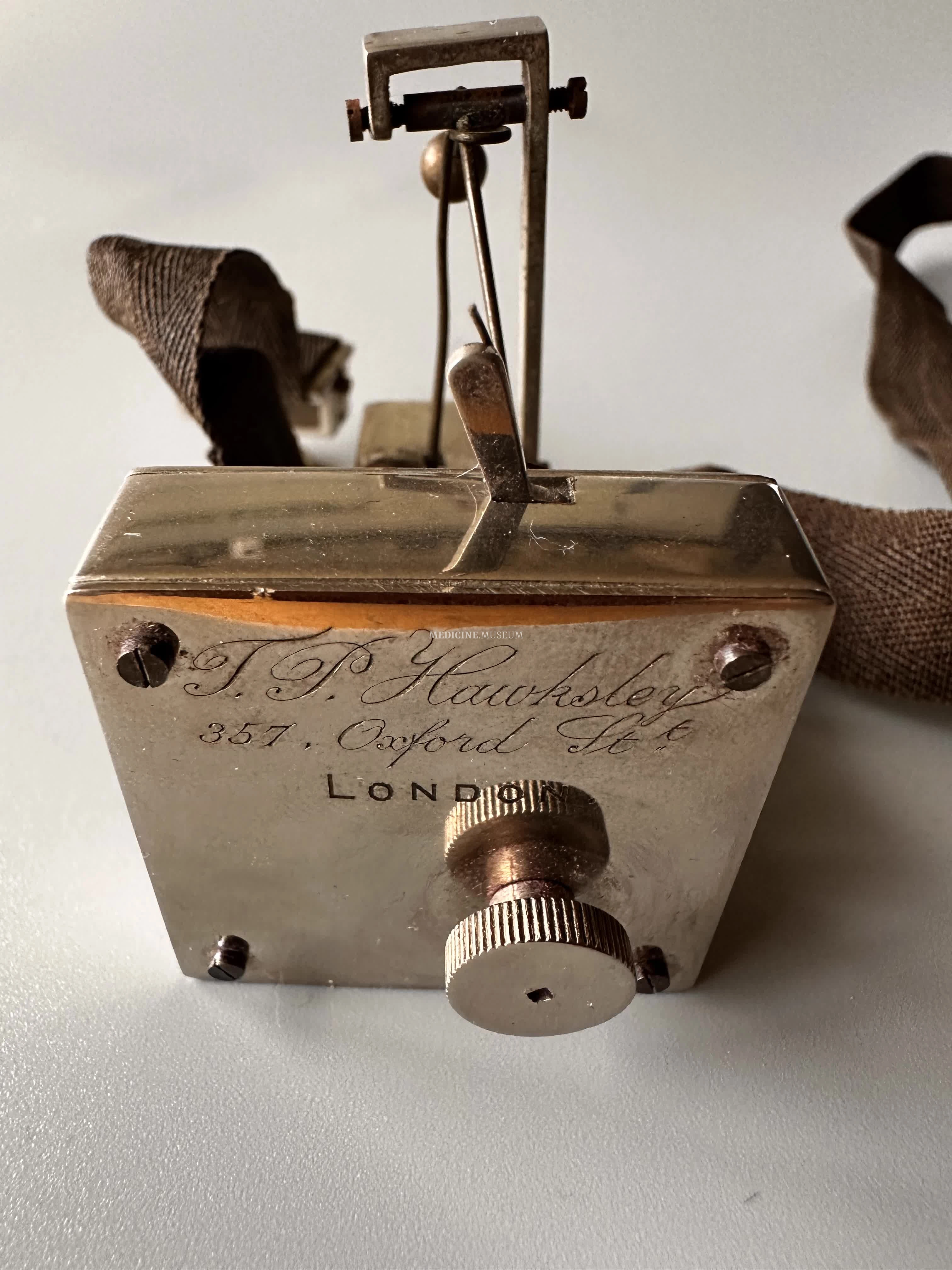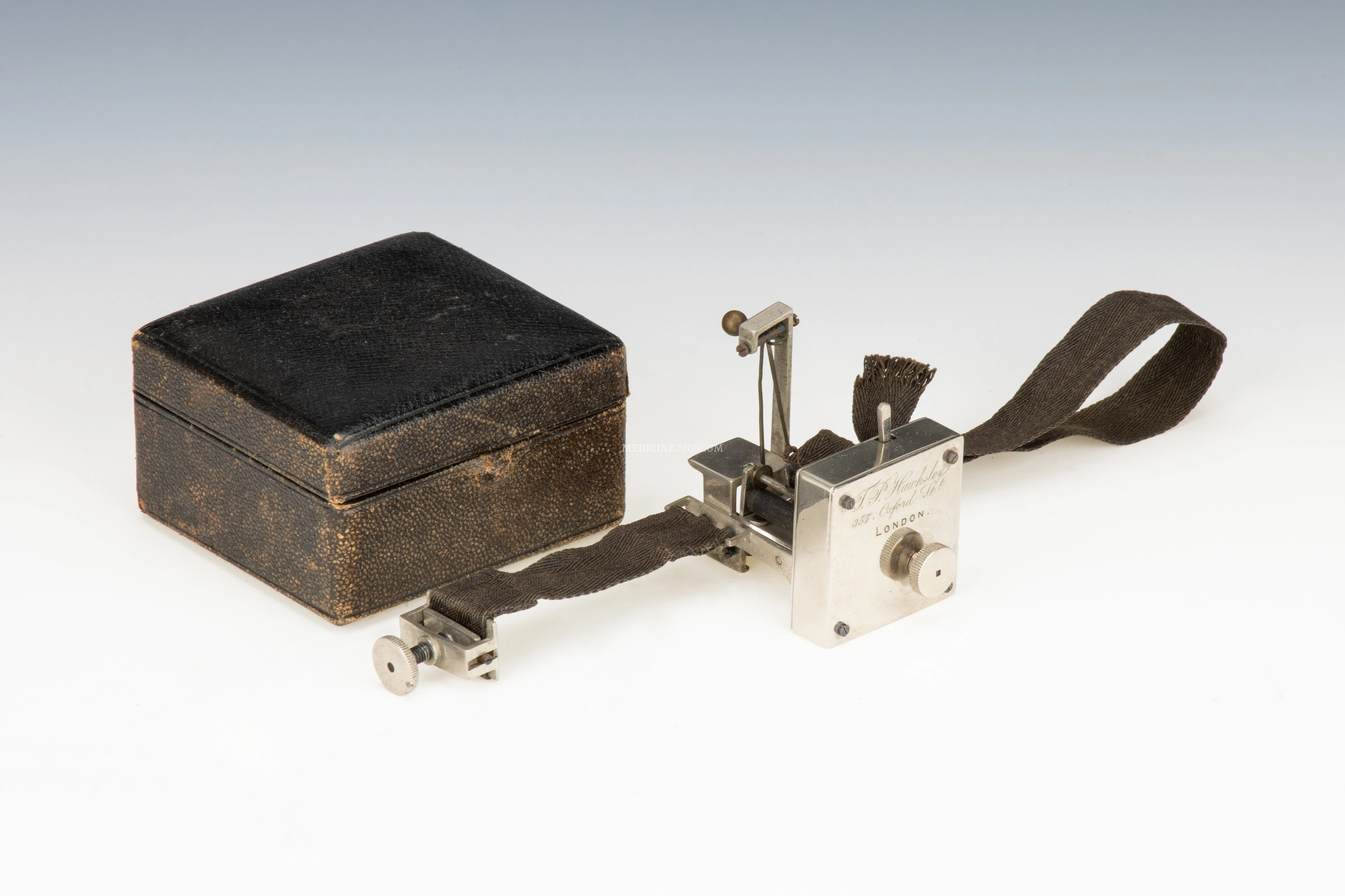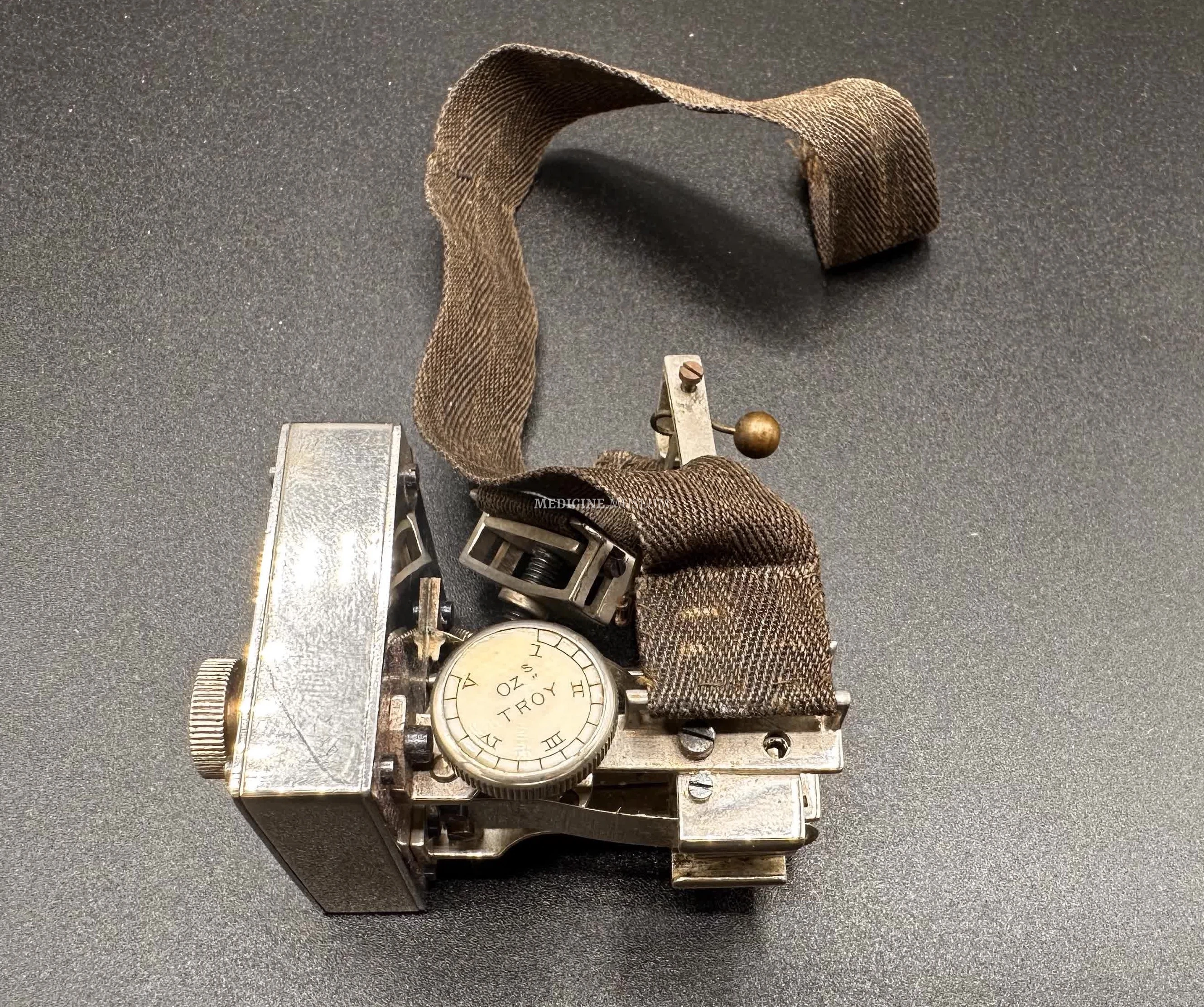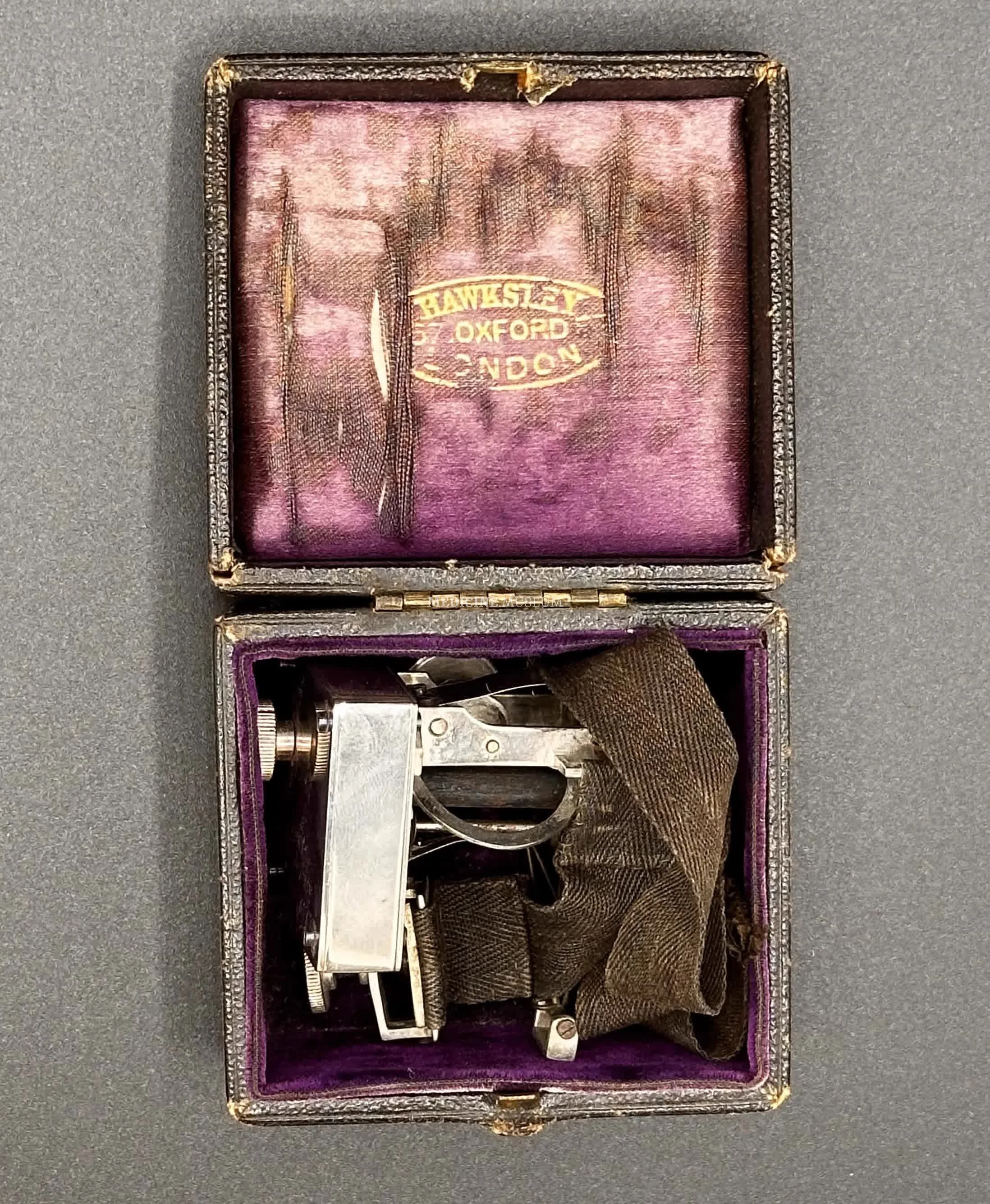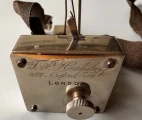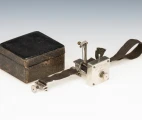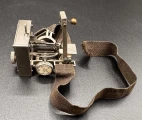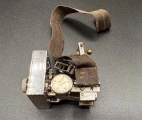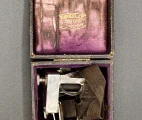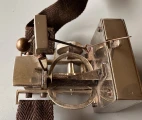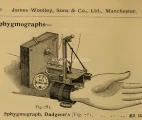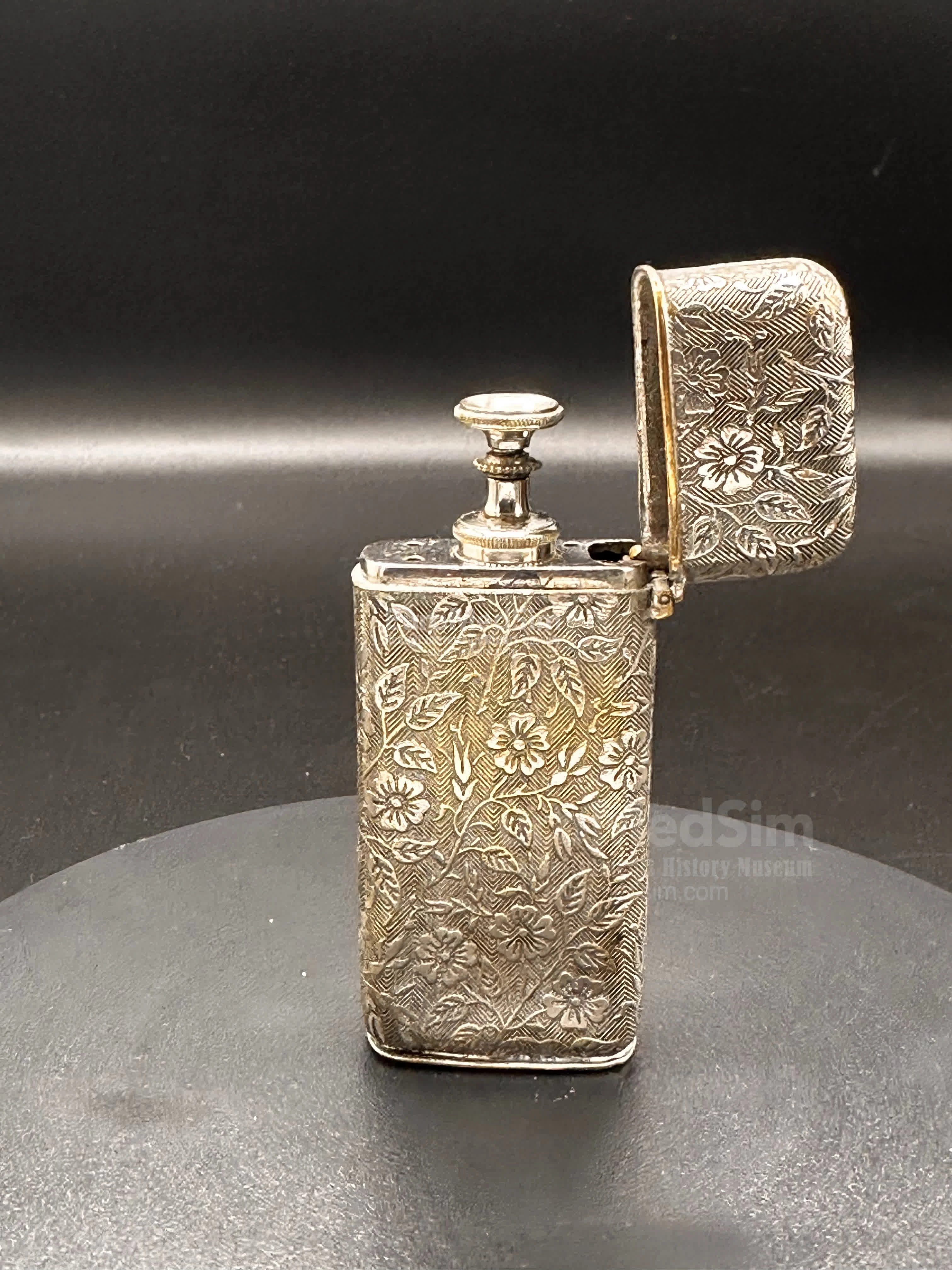Dudgeon's sphygmograph by Hawksley, London
Dudgeon's sphygmograph by Hawksley, English, c.1890, the clockwork housing engraved 'T. P. Hawksley 357 Oxford St London', with clockwork mechanism to one side, dark fabric wrist strap, in original black leather covered case, lined in purple velvet, with the trade logo inside the lid. Dimensions of the device: 5,3 x 3,8 x 5,8 cm (HxWxD). Dimensions of the box: 4,7 x 7,6 x 7,2 cm (HxWxD). Weight: 119 g (160 g with the box).
Sphygmograph
A sphygmograph is a medical instrument used to record the pulse wave. The sphygmograph is an early example of attempts to visualize and quantify the characteristics of the human pulse, which is fundamental to medical diagnosis. The first non-invasive device, which did not require as in earlier versions the opening of the arteries, where the movements of the artery were communicated to a lever, was developed by German physiologist Karl von Vierordt in 1854.
These devices worked by applying a sensor over a palpable artery (typically the radial artery at the wrist). A sensor, often a small metal or ivory plate, transmitted the pulse movements to a recording mechanism. A connected needle or pen component moves rhythmically in response to the pulse sensations transmitted through the button. The waves were recorded as curves on moving paper or smoked glass, creating a graphic representation of the force, rhythm, and other characteristics of the pulse, allowing doctors to visually study its features. These mechanisms were the predecessors of modern electronic devices such as electronic sphygmomanometers and pulse oximeters.
Dudgeon's Sphygmograph by Hawksley
Robert Ellis Dudgeon (1820-1904), a British physician, significantly improved the original sphygmograph design and introduced a more lightweight iteration of the sphygmograph in 1881. Notably, this version could be conveniently carried in one's pocket, making it more portable and easier to use. His modifications helped popularize the device for clinical use. Dudgeon's sphygmograph featured a spring-loaded mechanism to apply consistent pressure to the artery, a stylus for inscribing the pulse wave, and an adjustable band to secure the device to the patient's wrist. Additionally to his invention, Dr. Dudgeon published a book, describing the history of the subject, design of his invention and clinical application.
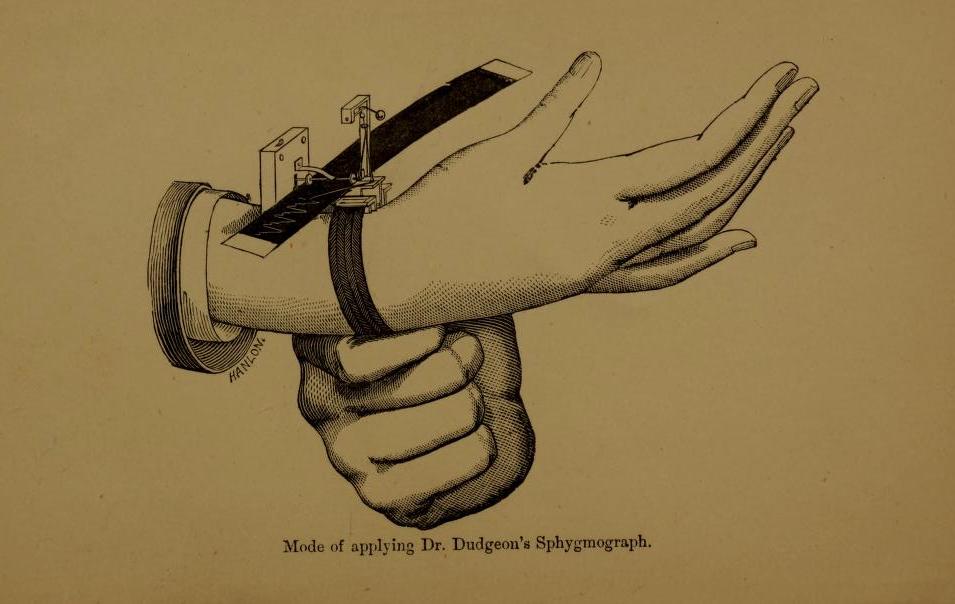
The illustration from the book The sphygmograph : its history and use as an aid to diagnosis in ordinary practice by Dudgeon, Robert Ellis. London, 1882. Source: archive.org. Contributor: Francis A. Countway Library of Medicine
The book contains 37 figures – mostly sphygmograms, as well as description of the device's functioning principals and "Directions for Use".

The samples of sphygmograms, illustrations from the book 'The sphygmograph : its history and use as an aid to diagnosis in ordinary practice', Robert Ellis Dudgeon, London, 1882. Source: archive.org. Contributor: Francis A. Countway Library of Medicine
The inscription "Hawksley 357 Oxford St. London" refers to the address of Thomas Hawksley Ltd., a small though prominent manufacturer and retailer of medical and scientific instruments in London. The company was known for producing high-quality medical instruments, including sphygmographs. Instruments bearing the Hawksley name and address are considered collectible due to their historical significance and craftsmanship and are represented in numerous medical museums, including the British Science Museum.
Reference object
The Dudgeon sphygmograph represents a significant step in the evolution of cardiovascular diagnostics and thus have great interest and are included into the exposition of medical museums including British Science Museum (as a reference: Dudgeon sphygmograph, object A56269, Science Museum). While today's methods for assessing the pulse are far more advanced, devices like the Dudgeon sphygmograph paved the way for modern non-invasive diagnostic techniques.
